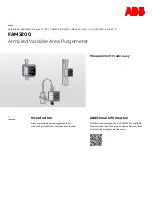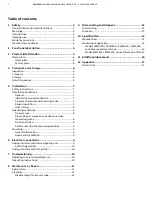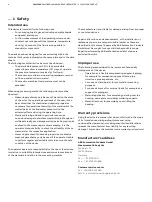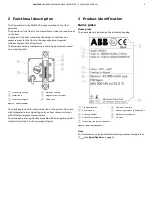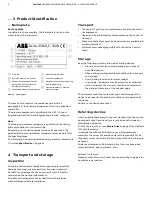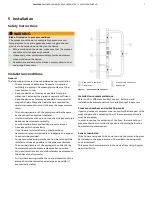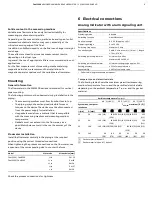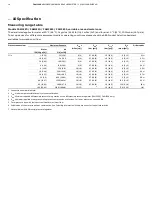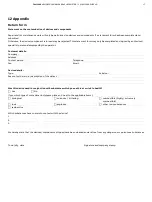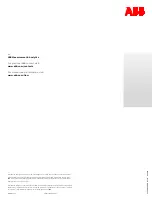
8
FAM3200
ARMORED VARIABLE AREA PURGEMETER | CI/FAM3200-EN REV. D
… 5 Installation
… Installation conditions
Heat tracing
Trace heating may be used under the following conditions:
• The heat tracing must be installed such to make sure that
there are no temperature increases in the indicator
housing.
• The maximum permitted temperature of the heat tracing
must not up-scale the permitted measuring medium
temperature.
• When using electrical heat tracing, attention must be paid
to potential functional impairment by electromagnetic
fields.
Operating conditions
A variable area flowmeter is specified for a defined set of
operating conditions of the measuring medium. For liquids and
gases, these are pressure and temperature-related properties
(density and viscosity) under operating conditions.
For gases, in particular, this means operating at a specific
operating pressure and operating temperature. The specified
accuracy of the device always refers to the operating conditions
underlying the specification.
Pressure loss
The available operating pressure at the measuring point must be
higher than the pressure loss listed for the flowmeter in the
specifications.
It is important to also consider the pressure loss downstream
from the flowmeter due to losses in the piping and other
fittings.
For information on pressure loss of the devices, see
Measuring
range table
on page 14.
Prevention of compression oscillations when measuring
gases
During low flow amounts and low operating pressure, so-called
compression oscillations of the float can occur.
If the maximum upstream pressure listed in the specifications is
not reached, the flowmeter can optionally be equipped with a
mechanical float damper.
Damping is available for the device types FAM3225 and FAM3255
with a process connection size > ¼ in.
To prevent self-generated compression oscillations, note the
following information from VDI / VDE 3513 Sheet 3:
• Select a flowmeter with the lowest possible pressure loss.
• Minimize the piping length between the flowmeter and
the nearest upstream or downstream throttling location.
• Set the limit of the regular measuring range from the
usual 10 to 100 % to 25 to 100 %.
• When setting the flow rate value, always start by
assuming larger values.
• Increase the operating pressure and consider its effect
on the flow rate changes due to the change in gas density
in the operating conditions.
• Minimize non-throttled, free volumes upstream and
downstream of the device.
Pressure shocks
Especially when measuring gases, it is possible that pressure or
shock waves can occur when fast opening solenoid valves are
employed and the piping cross-sections are not throttled, or if
there are gas bubbles in liquids.
As a result of the sudden expansion of the gas in the piping, the
float is forcibly driven against the upper floatstop.
Under certain conditions, this can lead to destruction of the
device.
The mechanical float damping is not suitable for the
compensation of pressure shocks!

